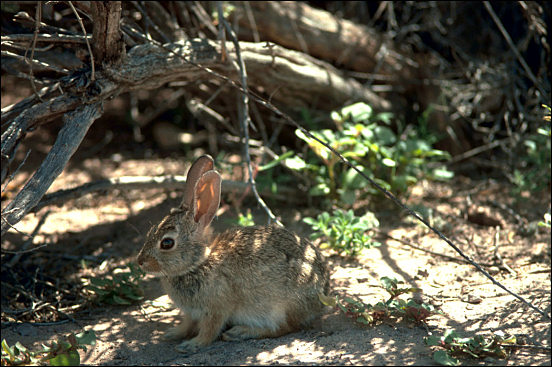

Museum goers ooh and ahh over fossil dinosaurs, and whales, and other giants. And well they might! After all, big IS impressive-how many adoring looks does the mountaineer get when he announces that he's going to go outside and climb a molehill?
Most paleontologists are awed by bigness as much as anyone else, but
they also know that it's usually the little stuff that's really revealing in
terms of climate and ecology. Remember the old question, "Where does a 600-pound
gorilla sleep?" The answer, of course, is "Wherever he wants to!" an
attitude shared by many behemoths—they wandered far and wide, and their bones are
silent to questions of the world past. It's the little folk, the mice and shrews
and beetles and lizards and—well, you get the idea—that tend to stick to
their own little patches. In our Chihuahuan Desert caves, early fossils of
Nuttall's Cottontail give way to the later Desert Cottontail, and the Short-horned
Lizard to the whip-tailed lizards. Little critters clearly telling us, times are
changing—the desert comes!

Contributor: Arthur H. Harris, Laboratory for Environmental Biology, Centennial Museum, University of Texas at El Paso.
Desert Diary is a joint production of the Centennial Museum and KTEP National Public Radio at the University of Texas at El Paso.

With increasing warmth and aridity, the Desert Cottontail (Sylvilagus audubonii) replaced the Ice Age cottontails in the lowlands. Photograph by Gary M. Stolz, courtesy of the U.S. Fish and Wildlife Service.